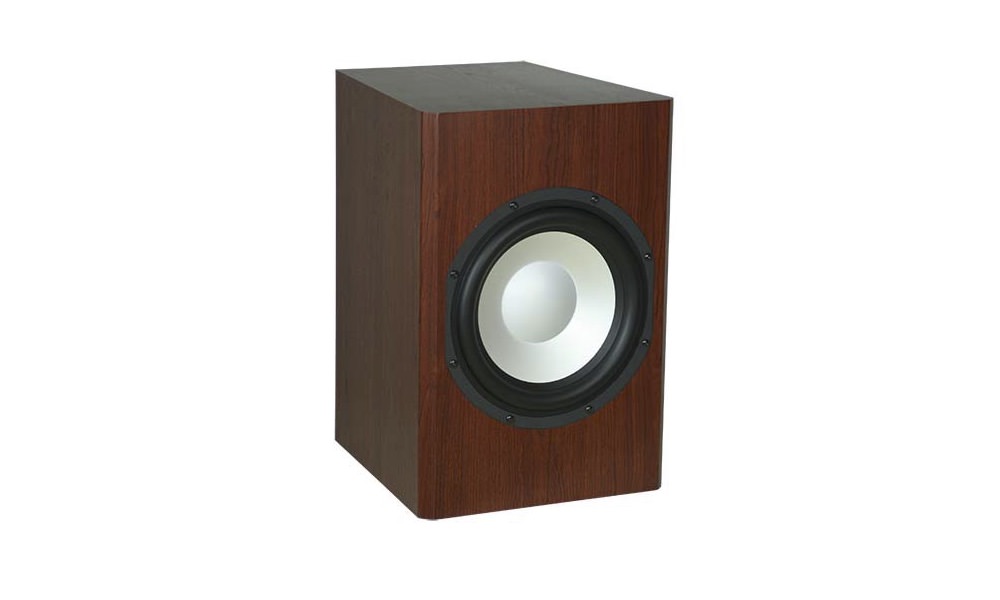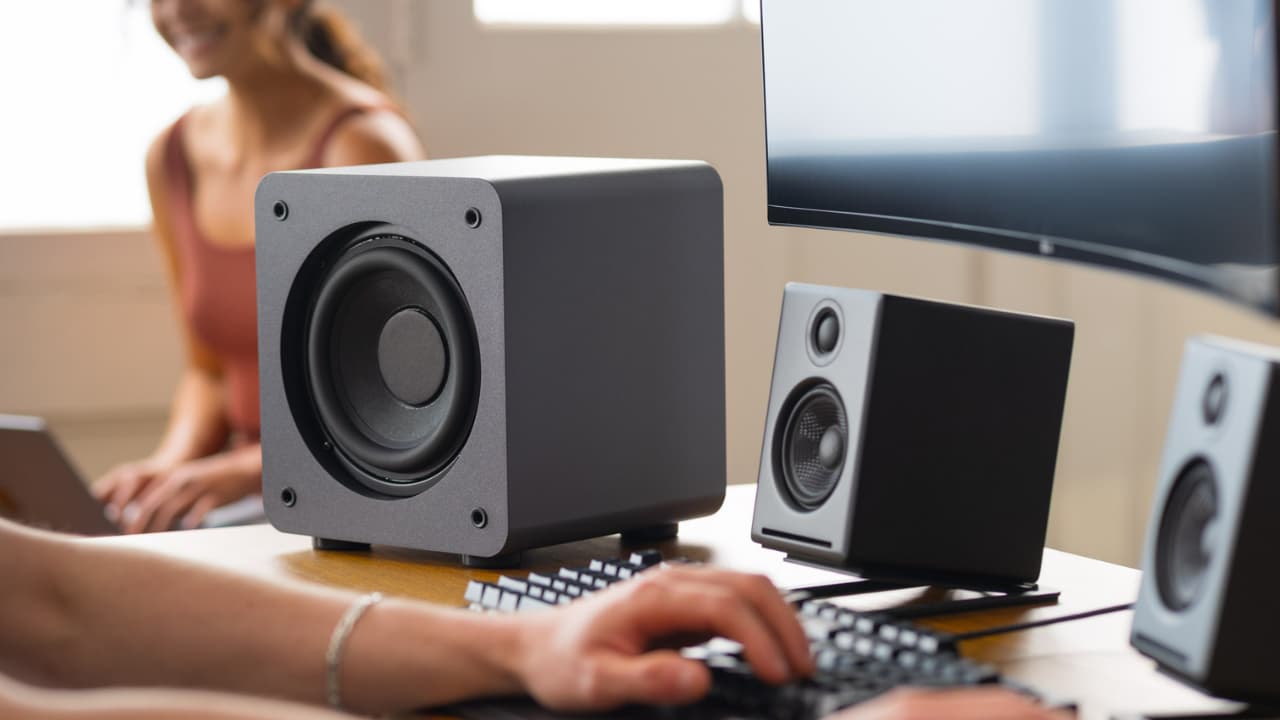Subwoofer setup, tips and tricks
Editor’s note: We reached out to the head of engineering at AxiomAudio.com to learn how to get the best bass response from any subwoofer. What follows is a four-part series accompanied by a video in each section if you’d rather watch than read. Enjoy!
Subwoofer Setup: Where to Begin?
So you just got a new subwoofer and want to ensure you squeeze every ounce of bass from it, right? It’s critical that you place it correctly to get the smoothest, most realistic bass. But the way a subwoofer sounds and interacts with a typical listening room can be a very complex subject.
There are all kinds of tools and measurement systems and other apps that will allow you to get very precise ideas of where you can place the subwoofer for the best response. But, a lot of those techniques don’t work well if you don’t have a reasonably good starting point.
Conventional wisdom says that you want to take your subwoofer and just slap it in the corner of the room. Now, in many cases, that will give you the loudest bass, but in most cases, it won’t give you the smoothest and most linear bass. So, it’s a decent starting point, but don’t assume that once you’ve put the subwoofer down and in place, that it should stay there.
In many homes, the only place that you can put your subwoofer is close to the television set, which usually means that it’s going to be behind either the left or right loudspeaker, and probably in the corner, unless you’ve got an L-shaped layout.
The corner placement is going to give you the biggest amount of what’s called room gain, which is additional output because of the loading of the room boundaries (the walls and the floor). If you are limited in terms of your placement, you should always try pulling the subwoofer out from being up against the corner.
As you do this, listen to music that you’re familiar with and try and find the position that gives you the smoothest bass. Even a couple of feet of pulling the subwoofer out from the corner can smooth out the bottom end significantly. Now, if you have two subwoofers in your set up, and again, you’re fairly limited, you’re going to do exactly the same thing.
However, an advanced technique when you have two subwoofers is to actually set them up in terms of looking for the best placement separately, and then balance the levels and make the adjustments with both of them playing after you’ve found a good position that gives you the smoothest bass for each subwoofer individually. If you’re not so limited on your placement of the subwoofer having to be behind the left or right main speakers in the system, a really good technique is to do something called the subwoofer crawl.
Now, this may sound a little bit strange, but it really works. The subwoofer crawl is simply a matter of taking your listening seat, either moving it or if you’ve got a large couch or something, placing the subwoofer as close as you can to the position where you’re going to be sitting listening to the system.
Then, connect it up as usual and play some music or movies that have some good little frequency content in them. Now, what you’re going to do — it sounds silly but it works — is get down on your knees and crawl around the perimeter, the outside edges of the room, listening for when the bass smooths out.
Subwoofers interact with rooms in a way that causes what are called room nodes which are peaks and valleys in the response. And these occur at different frequencies, depending on the room and where the subwoofer is placed. These peaks and valleys mean that as you crawl around, you may find some spots where all of a sudden you have very, very loud bass, but it doesn’t sound very smooth.
The flip side of that is that you may get into a position where you hear almost no bass at all, or very little. It doesn’t sound very full in that position. And now in that position, you are going to be in a room null, where the output of the subwoofer is actually canceling with the size and dimensions of the room.
By doing the subwoofer crawl, you can easily listen for a spot that gives you the smoothest, low-frequency bass. Then place your subwoofer in that position, and go back to your listening seat, and make sure it works. This easy technique doesn’t require you to be technical, doesn’t require a measurement equipment, and really works in most rooms.
What Subwoofer Input Should You Use?

On the back of your home theater receiver locate the output labeled subwoofer output, sometimes called “sub out” or “LFE out.” On most receivers, there is going to be one sub output, on some there will be two, but you’re simply going to plug your RCA cable into that subwoofer out on your receiver, and then the other end is going to connect to your subwoofer.
Depending on what model subwoofer that you own, you may have a multi plug which requires a quarter phono to RCA adapter, which is included with the subwoofer. If you have one of those amplifiers, you simply plug the adapter in and then you plug the other end of your RCA cable from your receiver’s sub out into that input connection, and now, the subwoofer is connected.
If you don’t have one of these multi jacks on your subwoofer, you’ll have just the standard RCA jack, and it’s just a matter of plugging into the RCA that’s labeled low level input. On some home theater processors, you’re going to find a different connection as an option, which is called an XLR connection. It’s typically found on higher-end equipment and it gives you the benefit of being able to run longer runs of these cables with lower noise and interference.
In the case that you’ve got an XLR subwoofer output on your processor, it’s exactly the same as the RCA connection.
If you have a multi jack, it plugs into the same connector that held the RCA adapter, and if you have a version with a dedicated XLR input, it simply plugs into that input there.
But, what if your receiver/amp doesn’t have a subwoofer output? In the case where there’s no sub out, you’re going to use what’s called the high level connections. These are identical to the speaker wire connections that you would use on a typical amplifier. Now, you have a couple of options here. You can either run your amplifier connections to the main speakers and then run another set of speaker cables to the subwoofer. Alternatively, you can either wire from the amplifier to the subwoofer and then jump off to your main speakers, or vice versa. You can go to the speakers from the amplifier and then from the main left and right speakers, and jumper to the subwoofer. In any case, connect both the left and right speaker outputs wherever they’re coming from to the input of the subwoofer amp.
What Do All Those Knobs Do, Anyway?

Now let’s explain what all the controls and the functions on the back of a subwoofers do. These days, most of the actual setup and the adjustments that you’re going to be doing can be done within the menus of your home theater receiver or processor.
There are some cases, where you’re going to be using a conventional stereo amplifier to drive the subwoofers, so there are some adjustments that you need to set. The first adjustment, and probably the most obvious, is the volume level, which sets how loud the subwoofer is going to sound for a given input signal.
We recommend if you’re using a home theater receiver or processor to set the volume as a starting point at the midway point. From there, make the fine adjustments using the Setup menu in your A/V Receiver.
There is also a control on the back of the subwoofers that allows you to set a crossover frequency. In some cases, it’s just a two-position switch that allows you to set 80 or a 150 Hertz. And in other cases, it’s going to have multiple settings, from 40 Hertz all the way up to 150 Hertz. Again, if you’re using a home theater processor, you want to put the Crossover in the highest frequency setting which is the 150 Hertz, and then set the fine tuned actual crossover point inside the A/V processor or receiver setup menu.
If you’re using a stereo amplifier and you don’t have bass management available to you, you’re going to now set that crossover point for whatever makes sense with the speakers that you’re using. Typically, when using your sub with bookshelf speakers, an 80 Hertz setting works well. If you’re using larger tower speakers, a 40 Hz or 60 Hz setting may work better. But it’s something you have to try and see which blends the best.
There’s another setting called Phase, which is in degrees. There’s a 0-degree setting and a 180-degree setting. This is the setting that confuses people because if you just flip the switch with music playing, immediately you’re not going to hear very much of a change at all. This switch really defines how the subwoofer is going to interact with your main front speakers. And to set it up is fairly simple.
First, play some music that’s got some good bass and mid-bass content in it, and then listen to the music playing with the switch in one position, and then switch it to the other position and listen again. And what you’re looking for is a setting that gives you fuller and slightly louder bass. That’s usually the correct setting.
Finally, we have an input on our subwoofers that’s labeled Trigger. And there’s an In and an Out available. The Trigger simply allows you to turn the subwoofer amplifier on and off remotely from your home theater receiver or processor so that when you turn the power on and off with your system remote control to the receiver, you’ll actually be switching the amplifier in the subwoofer on and off.
This is a 12-volt trigger which is fairly standard in the industry, and it simply uses an 8-inch phono plug. So you’re going to bring that signal from your processor or receiver and plug it into the trigger in on your subwoofer amplifier. Now when you turn the electronics and the rest of your system on and off, it’s going to switch that your subwoofer amplifier on and off.
You’ll know that that’s happening because normally the light on the back of the subwoofer will be green. If it’s in the standby mode, because you shut off the electronics from your receiver, it’s going to now turn red, so that you know that it’s in the Off position.
How to Wire Two or More Subwoofers
Having multiple subwoofers in your home theater is ideal to smooth out the low frequency bass and response in the room. Even two subwoofers can do a much better job giving you nice, linear base. But how do you hook them up?
First, the easy way: there are some home theater receivers and processors on the market that have more than one sub out on them. Usually, it’ll only be two if it does have more than one, and in that case, it’s very straight forward and pretty much self explanatory. You’re going to run a separate usually RCA cable from each of the sub outs on your receiver to the RCA inputs on your two subwoofers.
If, however, like the vast majority of home theater receivers in the market, there’s only one labeled sub out on the unit, you have a couple of options.

One option is that you can use an RCA splitting adapter where you will plug one end into the sub out on your receiver and now you have two outputs that you can run individually to the two subwoofers.
The only problem with that is that typically, the subwoofers are placed quite a distance away from the electronics and you may have to run two fairly long cables to connect up the two subwoofers.
A better option in those cases is actually to do something called daisy chaining which allows you to bring the single sub out connection from your receiver to the input of your first subwoofer. Then, using the low level output on the first subwoofer you can now join it to the input of your second subwoofer amplifier.
The other benefit of this connection is if you had more than two subwoofers, three or four let’s say, you can keep chaining them in this manner, going from the input on one to its output to the input on the next subwoofer out of its output to the input on the following subwoofer and so on. Now you can hook up as many subs as you want.
Extra: What to Look For In A Subwoofer Amplifier
Of course if you’re in the market for a home theater subwoofer, I’d recommend you checkout Axiom Audio subwoofers.
Related Reading
Subwoofer back panel controls explained







































